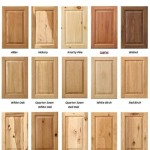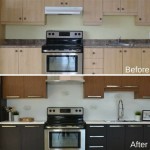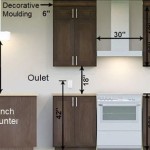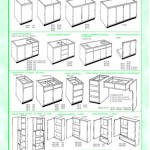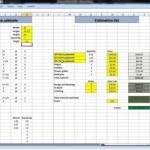Standard Kitchen Drawer Sizes Chart: A Guide to Kitchen Organization
When designing or renovating a kitchen, one crucial aspect often overlooked is drawer size. While cabinets are the prominent feature, drawers provide the essential storage space for everyday items, utensils, and appliances. A well-planned drawer system not only enhances kitchen functionality but also elevates the overall aesthetic. Understanding standard kitchen drawer sizes is key to achieving a highly organized and efficient kitchen. This article provides a comprehensive guide to standard kitchen drawer sizes and their optimal application in various kitchen zones.
Standard Kitchen Drawer Sizes: Dimensions and Applications
Standard kitchen drawer sizes are typically based on a 3-inch increment system, with each drawer depth measuring 3 inches, 6 inches, 9 inches, 12 inches, and 15 inches. This standardization allows for efficient space utilization and simplifies the process of choosing drawer organizers and inserts. Here's a breakdown of the most common drawer sizes and their typical applications:
- 3-inch drawers: These are the shallowest drawers and are ideal for storing small items like utensils, spices, and cutlery. They can be used for shallow pull-out shelves in cabinets as well.
- 6-inch drawers: These are a versatile size suitable for a range of items, including plates, bowls, and baking sheets. They can also accommodate cutting boards, small appliances, and pantry items.
- 9-inch drawers: These drawers are perfect for storing larger items like pots, pans, and serving platters. They are also commonly used for storing trays, linens, and baking tools.
- 12-inch drawers: These are the deepest drawers and offer ample storage space for larger items such as casserole dishes, mixing bowls, and cookware sets. They are also suitable for housing appliances, such as toasters or blenders.
- 15-inch drawers: While less common, these extra-deep drawers are ideal for storing bulky items, such as oversized platters, holiday decorations, or extra cookware.
It's essential to note that these are general recommendations. The actual drawer size may vary depending on the cabinet manufacturer and the specific design of the kitchen.
Choosing the Right Drawer Size: Considerations and Strategies
Selecting the appropriate drawer size involves considering the specific needs of the kitchen and the intended use of the drawer. The following factors should be considered:
- Kitchen Layout: The overall design of the kitchen, including the size and shape of the cabinets, will influence drawer size selection. A compact kitchen may require smaller drawers to maximize space, while a larger kitchen may accommodate deeper drawers.
- Storage Needs: Consider the types of items that will be stored in each drawer. For instance, a drawer for utensils requires a smaller depth than a drawer for pots and pans.
- Accessibility: Ensure that drawers are positioned at a comfortable height for easy access and retrieval. Consider using pull-out shelves for items stored in upper cabinets.
- Organization: Think about the organization strategies that will be used within each drawer. Dividers, trays, and inserts help maximize storage space and keep items organized.
- Budget: Drawer sizes can influence the cost of cabinetry. Larger drawers may come with a higher price tag but can save on the number of drawers needed.
Examples of Standard Kitchen Drawer Sizes in Action
To illustrate the practicality of these sizes, here are examples of how to apply them effectively in a typical kitchen:
- Base Cabinets: A typical base cabinet might have 3-inch drawers for utensils and cutlery, 6-inch drawers for plates and bowls, and a 9-inch or 12-inch drawer for pots and pans.
- Corner Cabinets: Corner cabinets often feature pull-out shelves or carousel units to maximize space. Shallow 3-inch or 6-inch drawers are often used in these units.
- Upper Cabinets: Upper cabinets typically have shallower drawers, such as 3-inch or 6-inch drawers, for storing items that are frequently used.
- Pantry Cabinets: Pantry cabinets often feature pull-out shelves or deeper drawers of 12 inches or 15 inches to accommodate larger items, such as canned goods or boxed food.
By understanding standard kitchen drawer sizes and applying them strategically, you can create a highly functional and aesthetically pleasing kitchen space. With careful planning and attention to detail, you can design a kitchen that efficiently stores all your culinary necessities and streamlines your daily kitchen routine.

Base Cabinet Size Chart Builders Surplus

Kitchen Base Cabinet Size Chart Builders Surplus Cabinets Sizes Espresso

N Standard Kitchen Dimensions Renomart

Wall Cabinet Size Chart Builders Surplus

Kitchen Wall Cabinet Size Chart Builders Surplus Cabinets Sizes Dimensions

Cabinet Sizes Blok Designs Ltd

Woodcraft Custom Kitchen Cabinet Measurements

Cabinet Sizes And Types Chart Gs Building Supply Inc

Woodcraft Custom Kitchen Cabinet Measurements

Mill S Pride Richmond Vesuvius Gray Plywood Shaker Ready To Assemble Base Kitchen Cabinet Laundry Room 90 In W X 24 D H Ldry B90 Rvg The Home Depot
Related Posts


